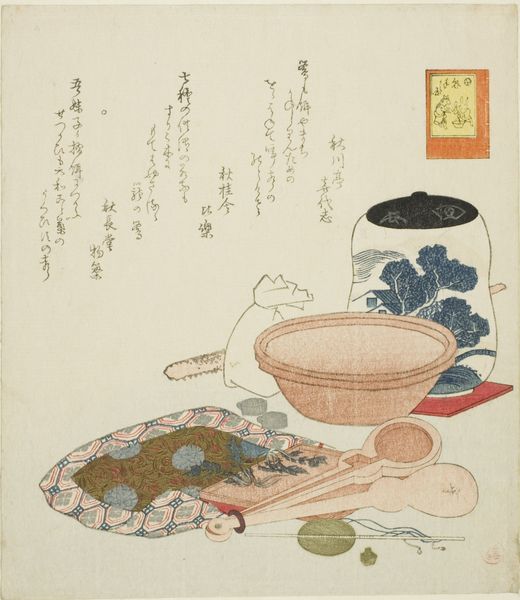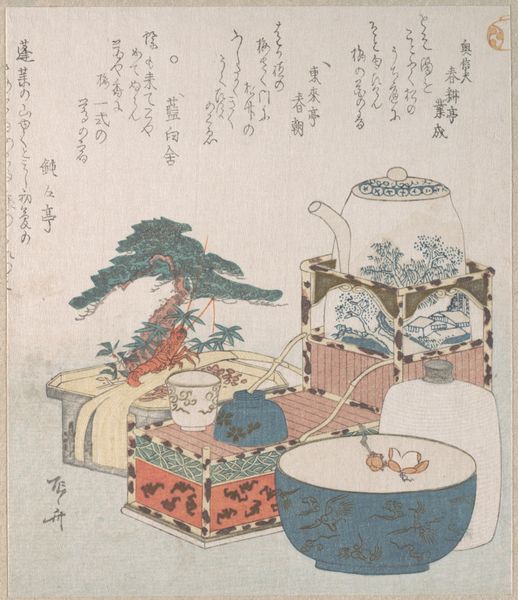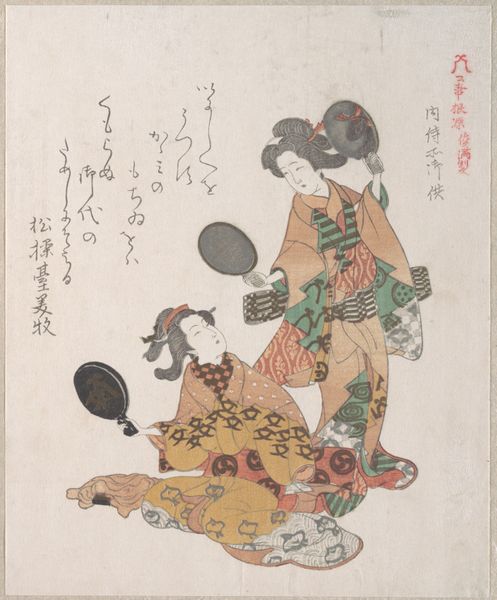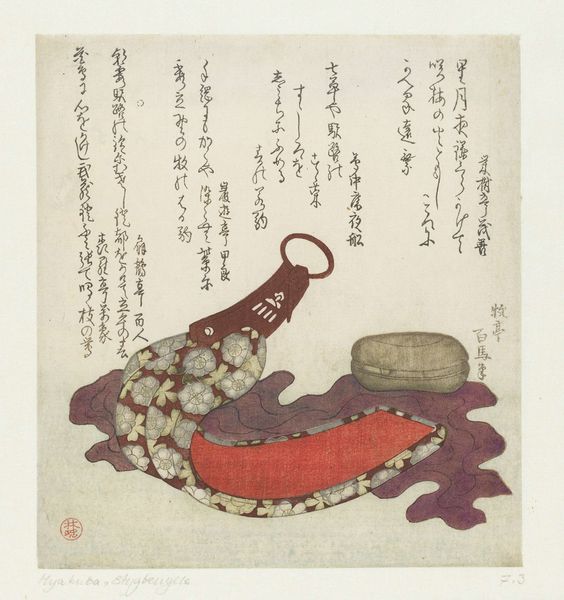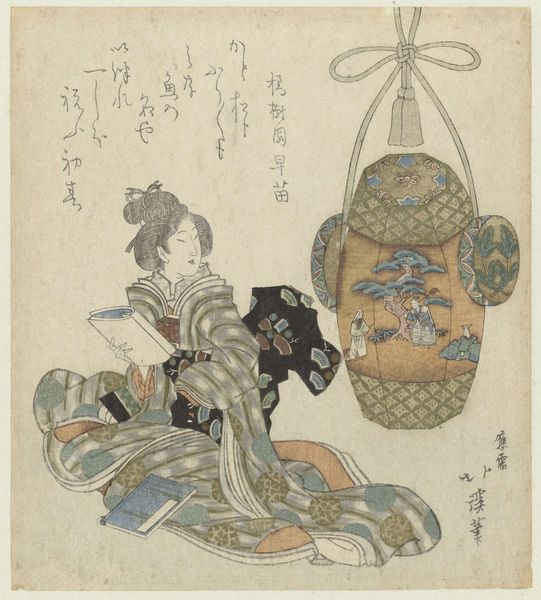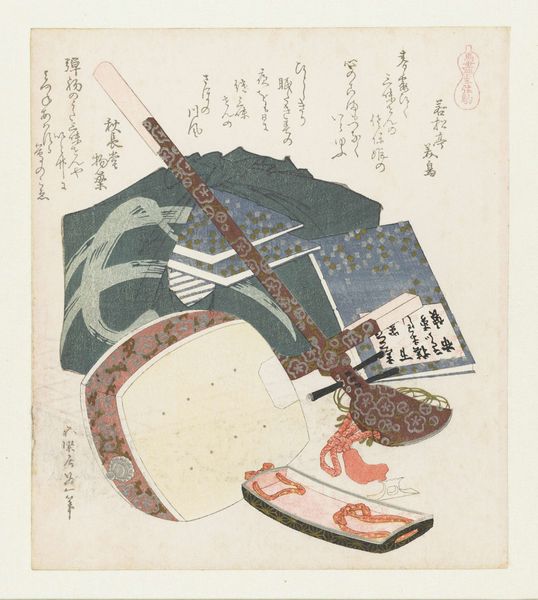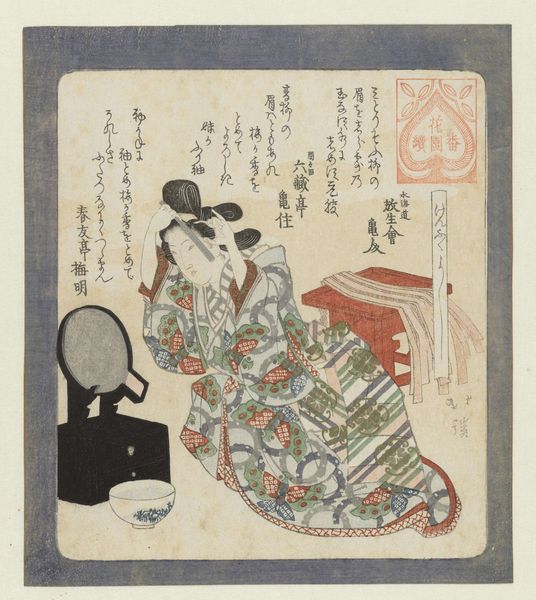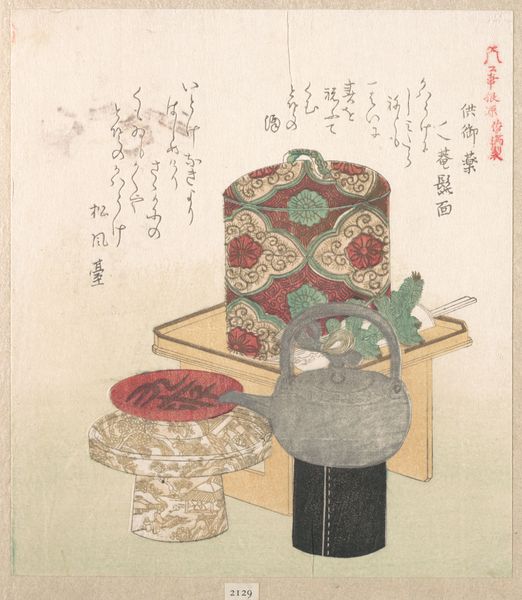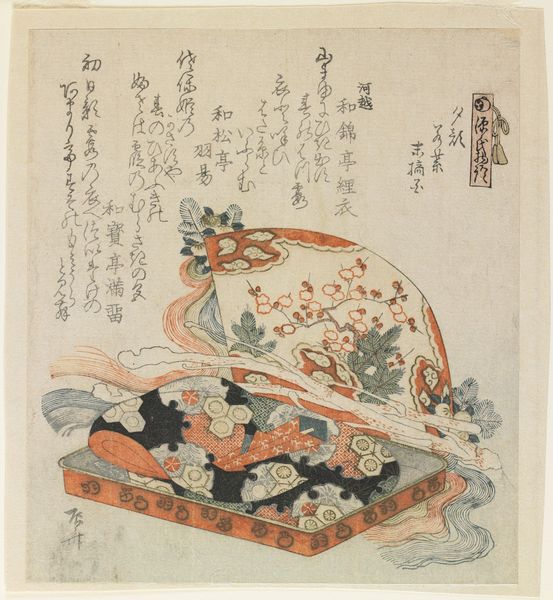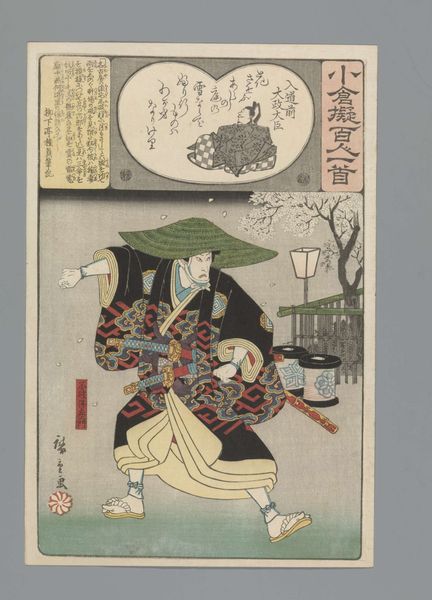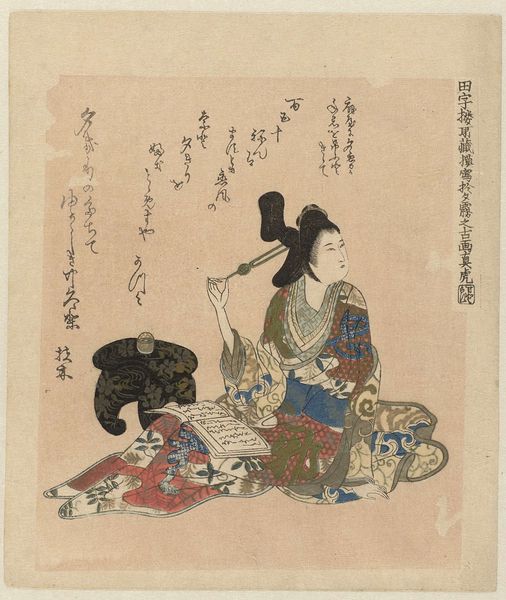
Dimensions: height 216 mm, width 183 mm
Copyright: Rijks Museum: Open Domain
Katsushika Hokusai created this print, Paarden-geld, using woodblock printing. His work emerged during the Edo period, a time of economic growth, strict social order, and relative peace under the rule of the Tokugawa shogunate. Hokusai navigated this complex social landscape by embracing ukiyo-e, or "pictures of the floating world," a genre that celebrated everyday life and the transient pleasures of the merchant class. Paarden-geld translates to "horse money," and is a playful composition that reflects the cultural values of 19th century Japan. It's a still life, but also contains elements of satire. The image foregrounds a sake cup and a lacquer tray, symbols of conviviality and social rituals. Coins and keys are included, which may represent wealth and status in a subtle critique of social mobility. What do we make of the small bag and gourds? Hokusai asks us to consider themes of prosperity, social standing, and the ever-changing currents of life.
Comments
No comments
Be the first to comment and join the conversation on the ultimate creative platform.
